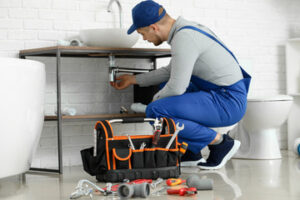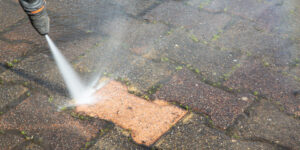Duct Cleaning Salt Lake City is a necessary step to keep your HVAC system working at its best. Professional duct cleaners use advanced equipment to thoroughly clean the entire system, including hard-to-reach areas.

A thorough duct cleaning can rid your home of unwanted allergens and contaminants. However, a professional service might cost more than DIY methods, and scheduling may be difficult.
Just like books and shelves, your air ducts collect dust, debris and air pollutants. These contaminants are pulled into your HVAC system and recirculated throughout your home an average of five to seven times a day. Over time, this can cause breathing difficulties for people suffering from allergies, asthma or other respiratory issues. The good news is that these contaminants can be reduced with professional cleaning.
Air duct cleaning involves removing accumulated contaminants from your heating, ventilation and air conditioning (HVAC) ducts, as well as the vents and registers they connect to. It also involves sanitizing the drain pans, evaporator coils and condenser unit as part of a comprehensive HVAC system cleaning. This is important because contaminated ductwork can disperse the contaminates, including mold, throughout your home, rather than trapping them.
The cleaning process is typically performed by a certified and licensed professional with specialized tools. It is a complex process that should never be attempted as a DIY project. In addition to the dangers of improper cleaning techniques, attempting to clean your air ducts with common household vacuum cleaners or brushes can release harmful bacteria into living spaces. It is also essential to have the right equipment for the job, as some types of ductwork, such as flexible ducts, are more prone to damage than other types, such as aluma flex ductwork.
Our technicians will begin by testing your ductwork to determine its condition and then use the proper equipment to remove the built-up contaminants. After the ductwork has been cleaned, we will sanitize the register grills and air vents as part of our comprehensive service, then test again to ensure that all contaminants have been removed.
A thorough cleaning of your HVAC system and ductwork will not only improve indoor air quality, but it will reduce the amount of energy your system uses to heat and cool your home. A dirty duct system forces the HVAC unit to work harder than necessary, which can result in higher energy bills. Our specialized cleaning process can eliminate build-up, allowing your system to operate at peak efficiency.
Reduced Allergens
Whether you suffer from seasonal allergies or have long-standing asthma, indoor air pollutants can make your symptoms worse. Allergens like dust, mold spores, pet dander and pollen can circulate throughout your home and trigger allergy symptoms like itchy eyes and runny nose. Fortunately, professional duct cleaning can help. Duct cleaning removes these irritants and improves indoor air quality, reducing allergen levels that cause your allergies and asthma to flare up.
Allergies are your body’s immune response to a foreign substance that triggers an allergic reaction in the form of itchy eyes, runny nose or sneezing. These reactions can be dangerous for people with asthma, auto-immune disorders and other respiratory conditions.
Your air ducts are the main source of these allergens in your home. Microscopic dust particles, fabric fibers and other debris naturally settle in your air ducts over time. Dark and damp conditions inside the ducts also encourage mold growth, another common allergen. As your HVAC system runs, these substances are constantly recirculated through your vents, irritating your sinuses and respiratory system again and again.
The resulting poor air quality caused by these contaminants is not good for anyone, but it’s especially detrimental to asthmatics. Studies have shown that clean air quality minimizes allergy symptoms and enables asthmatics to live a more comfortable life.
Keeping your air ducts clean can be challenging, but it’s important to do so in order to maintain good indoor air quality. You can reduce the number of allergens in your home by changing your furnace filter regularly, cleaning your vent covers and keeping furniture and curtains away from vents. In addition, you can hire a trusted, NADCA-certified air duct cleaner to ensure that your ducts are thoroughly cleaned and free of contaminants. Contact a local NADCA-certified air duct cleaner today to schedule your duct cleaning service. They will be able to provide you with more information on how this process can improve your indoor air quality and help relieve your allergy and asthma symptoms. Getting your ducts cleaned regularly will also help to prevent the accumulation of these harmful contaminants in the future.
Reduced Stale Smells
A dirty air duct system can harbor foul smells that are circulated throughout the home every time the air conditioner or furnace runs. Odors from mildew, pets, household cleaning products, paint fumes, tobacco use, food preparation and more can all contribute to a musty odor that lingers in your vents. With periodic duct cleaning services, these odors can be eliminated.
While it’s important to regularly dust surfaces in your home, if you notice a stale or musty odor coming from your vents, this could be due to contaminated or dirty ductwork. Dirty ductwork can collect debris and contaminants like pet dander, volatile chemicals, pesticides and carbon monoxide, which get sucked into your vents and then blown into your living space.
These pollutants can make you and your family sick and can trigger allergies and respiratory issues. By having your ducts cleaned on a regular basis, you can reduce the amount of these harmful particulates in your indoor air and improve your family’s health.
In addition to reducing stale odors in your home, regular duct cleaning can also help reduce the risk of mold and mildew growth in your home. This is because if these particles are left untreated, they can cause mold and mildew to grow within your home, which can lead to more severe problems.
In some cases, a bad odor that’s coming from your air vents can be caused by sewage backups or rodent infestation. If this is the case, you should call a professional to inspect and repair your sewer line or the areas in and around your home where the bad odors are occurring. If the odor is coming from your ductwork, you can try placing bowls of baking soda in your air vents to absorb the odor. However, this should only be used as a temporary solution until you can have your ducts professionally cleaned and treated.
Better Indoor Air Quality
Just like you wipe down your picture frames and countertops, you should also clean your air ducts from time to time. Over time dust builds up on these surfaces as it settles in the dark corners of your ductwork where you cannot see it. This dust can then get blown around your home every time your HVAC system is running and re-circulating the same dirty air. Over time this can irritate people with asthma or other respiratory conditions.
Duct cleaning helps to eliminate this accumulated dirt and debris and reduces the number of allergens and other irritants that are released into your indoor air. These contaminants include pet dander, pollen, mildew, mold spores and other bacteria that contribute to respiratory problems. Duct cleaning also eliminates odors that are caused by smoking, pet urine, cleaning agents and other sources.
Dirty ducts are also the perfect breeding ground for pests that can contribute to an overall poor quality of indoor air. These include mice, cockroaches, ants, rodents and other household pests that can release feces, wings, carcasses, saliva, fur and other particulate matter into your ductwork.
If you are experiencing a pest infestation problem, duct cleaning is an important part of your pest control strategy. This will remove the contaminant sources that the pests are using to thrive and help you get rid of the bugs more effectively.
In addition to routine maintenance, duct cleaning is a good idea after any type of renovation work that may have been performed on your home. If your home has recently undergone water or fire damage restoration, a basement refinish or any other type of major construction, there is a high likelihood that sawdust, wood shavings, drywall and other construction debris will have been sucked up into the ventilation system and pushed throughout the house. Duct cleaning will clear these out so that they are not continuously recycled and recirculated.
The benefits of having your ducts cleaned go well beyond the obvious ones mentioned above. Poor indoor air quality is not only uncomfortable but can contribute to health problems and even lead to premature death. Keeping your ducts clean will improve the quality of the air in your home and should be an important consideration for people who live with chronic illness, children and the elderly.

